
Royal Air Force Coltishall more commonly known as RAF Coltishall is a former Royal Air Force station located 10 miles north-north-east of Norwich, in the English county of Norfolk, East Anglia, which operated from 1939 to 2006.
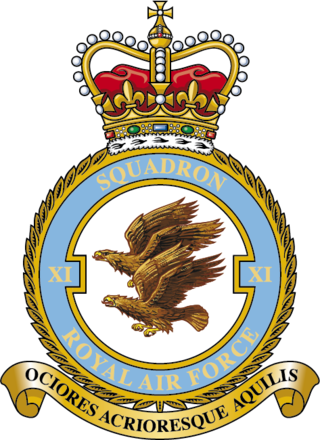
No. 11 or XI Squadron, is "the world's oldest, dedicated fighter unit" and continues the traditions established by the similarly numbered Royal Flying Corps squadron, established in 1915. After a history of equipment with numerous different aircraft types, the squadron most recently operated the Tornado F3 until 2005 when it was disbanded. It was reactivated in 2006 to operate the Typhoon F2, receiving its first aircraft on 9 October 2006.

No. 29 Squadron of the Royal Air Force was first raised as a unit of the Royal Flying Corps in 1915, and is one of the world's oldest fighter squadrons. The second British squadron to receive the Eurofighter Typhoon, it is currently the operational conversion unit (OCU) for the Typhoon.

Number 39 Squadron is an inactive squadron of the Royal Air Force. It last operated the General Atomics MQ-9A Reaper from Creech AFB, Nevada, between January 2007 and July 2022. It had previously operated the English Electric Canberra PR.7, PR.9 and T.4 from RAF Marham, Norfolk, as No. 39 Squadron between July 1992 and July 2006.

No. 211 Squadron RAF was a squadron in the Royal Air Force active from 1917 to 1919 and from 1937 to 1946. In World War I it operated as a bomber and later a reconnaissance unit on the Western Front. In World War II it operated as a medium bomber unit in the Middle East and Far East and later as a strike fighter unit in the Far East, equipped with, successively, the Bristol Blenheim, the Bristol Beaufighter and de Havilland Mosquito.

409 Tactical Fighter Squadron is a unit of the Royal Canadian Air Force. The squadron operates the CF-18 Hornet from CFB Cold Lake in Alberta, Canada.

Royal Air Force Horsham St Faith or more simply RAF Horsham St Faith is a former Royal Air Force station near Norwich, Norfolk, England which was operational from 1939 to 1963. It was then developed as Norwich International Airport.

No. 151 Squadron was a squadron of the Royal Air Force.
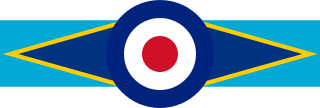
The name No. 68 Squadron has been used for two quite different units, only one of which was strictly a unit of the Royal Air Force. "No. 68 Squadron RFC" was for a time the official British military designation for No. 2 Squadron Australian Flying Corps.

No. 89 Squadron was a Royal Air Force squadron, mainly active in the fighter role during its existence.

Middle Wallop Flying Station is a British Army airfield located near the Hampshire village of Middle Wallop. It is the Headquarters for the Army Air Corps, and the 1st Aviation Brigade Combat Team, and is also used for Army Air Corps training. The base hosts 2 (Training) Regiment AAC and 7 (Training) Regiment AAC under the umbrella of the Army Aviation Centre. 2 Regiment performs ground training; 7 Regiment trains aircrew on AAC aircraft after they complete basic training at RAF Shawbury.
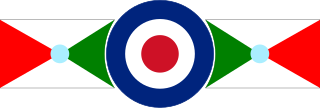
No. 253 Squadron was a flying squadron of the Royal Air Force between 1918 and 1947. Originally formed in 1918, it served in WW1 flying coastal reconnaissance and anti-submarine patrols. Later in WW2 it took part in the Battle of France, the Battle of Britain, and then fought in the Mediterranean Theatre of Operations in Algeria. The squadron was disbanded on 16 May 1947, and briefly revived as a night-fighter squadron from 18 April 1955 to 2 September 1957.

Royal Air Force Fairwood Common, or more simply RAF Fairwood Common, is a former Royal Air Force sector station located on Fairwood Common, on the Gower Peninsula, to the west of Swansea. It is now the location of Swansea Airport.
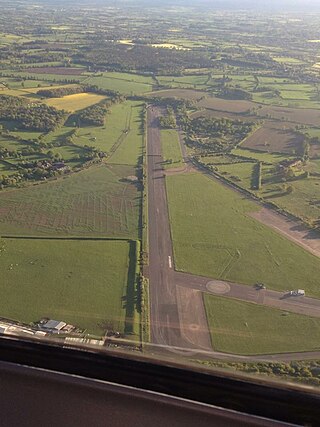
Royal Air Force Honiley or RAF Honiley is a former Royal Air Force station located in Wroxall, Warwickshire, 7 miles (11 km) southwest of Coventry, England.
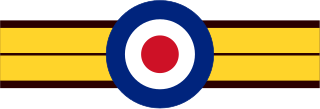
No. 264 Squadron RAF, also known as No. 264 Squadron, was a squadron of the Royal Air Force.

No. 64 Squadron was a squadron of the Royal Air Force, first formed on 1 August 1916 in Norfolk as a squadron of the Royal Flying Corps, and serving in France during World War I. It was re-formed in 1936, going on to fly Spitfires in the Battle of Britain, and for much of World War II. Post-war it remained as a fighter squadron, converting to Gloster Meteor jet aircraft in 1951, and then Gloster Javelins until 1967. It then became the shadow unit for No. 228 OCU, flying the F-4 Phantom until both 228 OCU and 64 Squadron were disbanded on 31 January 1991 at RAF Leuchars.
No. 108 Squadron RAF was a squadron of the Royal Flying Corps during the First World War which continued to serve with the Royal Air Force in the Second World War.
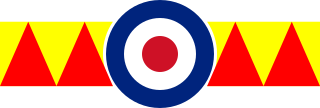
No. 604 Squadron RAF was a squadron of the Royal Air Force noted for its pioneering role the development of radar-controlled night-fighter operations. The squadron was established in March 1930 at RAF Hendon as a day-bomber squadron of the Royal Auxiliary Air Force. In July 1934, the squadron transitioned to two-seat fighters. Shortly after the commencement of World War II in 1939, the squadron was reassigned to a night-fighter role.
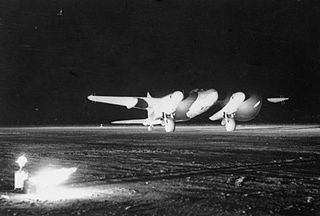
No. 256 Squadron RAF was a flying squadron of the Royal Air Force which operated during the First and Second World Wars. Initially equipped with Dh6 and Kangaroo aircraft, it operated Defiant Mk IIs, Beaufighters, and Mosquitoes in the Second World War.

No. 219 Squadron of the Royal Air Force was founded in 1918 and disbanded in 1957 after four separate periods of service. During the First World War it served as a coastal defence unit, and through most of the Second World War and the 1950s it operated as a night fighter air defence squadron. Three commanders of the squadron went on to be Chiefs of the Air Staff, two of the RAF and one of the Royal Pakistani Air Force.





















